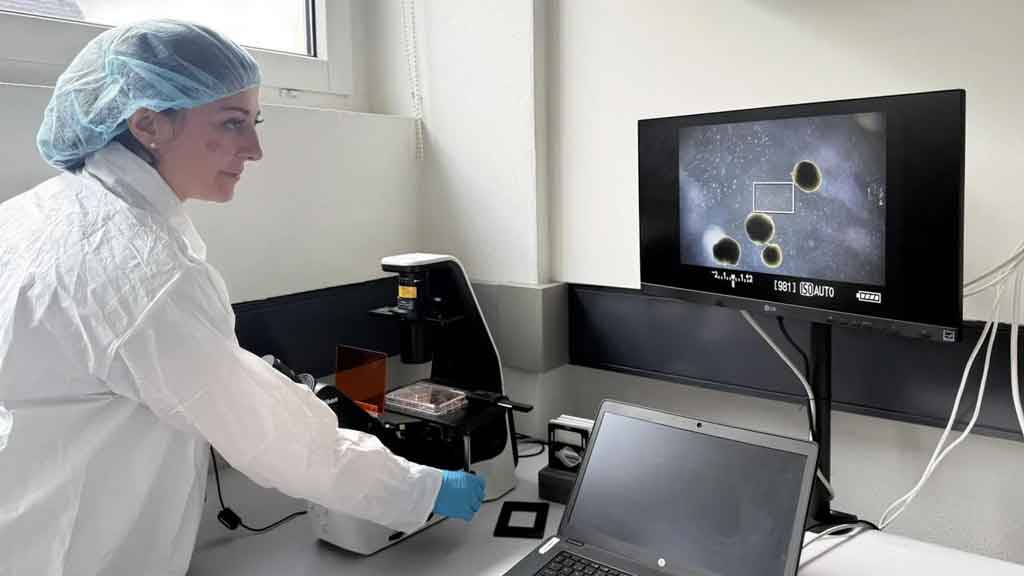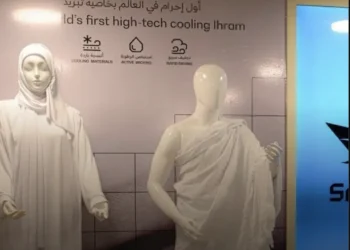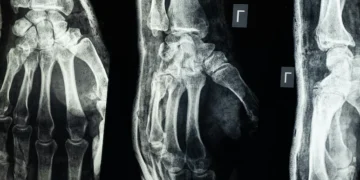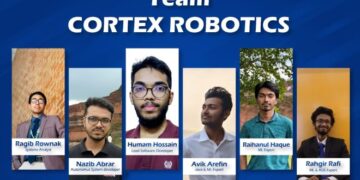Highlights
- Swiss scientists grow mini human brains from stem cells to use in computers.
- These “bio-computers” may work like AI but use much less energy.
- The new system combines biology with technology, creating a concept called “wetware.”
- Challenges remain — such as keeping these mini-brains alive without blood vessels.
- Experts believe bio-computing could support, not replace, silicon chips in the future.
A New Step in Computing Science
What sounds like a science fiction story is now becoming reality. A team of Swiss scientists at FinalSpark Laboratory has started using lab-grown human brain cells to create a new kind of computer. Their research is leading the world into the strange and exciting field of biocomputing.
The scientists dream of a future where data centers will have “living” servers. These servers will learn and process information like artificial intelligence (AI) but use only a small amount of energy compared to today’s systems.
What Is a Bio-Computer?
Traditional computers are made up of hardware and software. But in this new type, FinalSpark’s co-founder Dr. Fred Jordan introduces a third term — “wetware.”
Wetware refers to lab-grown organoids — small clusters of brain cells made from stem cells. These organoids are connected to electrodes, allowing them to send and receive electrical signals. That’s when they begin to act like a tiny biological computer.
“ব্যবসায়ী, ক্যারিয়ার বিল্ডার বা মার্কেটার—সবার জন্য এক রোডম্যাপ ! ক্লিক করুন এখানে…”
A Strange but Thought-Provoking Idea
Dr. Jordan admits that many people may find biocomputing strange.
“People have long known this idea through science fiction. When you say you’ll use a neuron as a tiny machine, it changes how we see the brain and makes us question our own existence.”
How Are These Mini Brains Made?
The process begins with stem cells taken from human skin, which the Swiss scientists purchased from a clinic in Japan. The donors remain anonymous, though many people now volunteer to donate stem cells for research.
Dr. Jordan explained,
“Many people come to us, but we only select stem cells from official suppliers because the quality is very important.”
After several months, these stem cells grow into clusters of neurons — mini-brains. They are not as complex as a human brain, but they have similar structures. When connected to electrodes, they can respond to simple keyboard commands by sending and receiving electric signals.
Read More: India-Pakistan Tensions Escalate: Threats from Both Army Chiefs
Teaching the Mini Brains
When researchers press a key, a signal travels through the electrodes to the mini brain. If it responds correctly, the activity shows up as a small graph on the computer screen — similar to an EEG (Electroencephalogram) pattern.
Dr. Jordan said the team still doesn’t fully understand how or why the organoids react the way they do. Their main goal now is to stimulate the neurons to learn and perform basic tasks — a first step toward making real bio-computers.
The Challenge of Keeping Them Alive
Unlike electronic computers, these biological systems can “die.” One major challenge is that organoids lack blood vessels, meaning they can’t naturally receive nutrients like the human brain does.
Professor Simon Schultz, Director of the Centre for Neurotechnology at Imperial College London, explained:
“Organoids have no blood vessels… we still cannot properly create them. That’s the biggest challenge.”
Currently, FinalSpark’s organoids can survive up to four months. Interestingly, some show sudden bursts of activity just before dying — similar to what happens in a human brain at the moment of death.
Dr. Jordan noted,
“In some cases, we observed a sudden increase in activity just before death. Over the past five years, we recorded around 1,000 to 2,000 such deaths.”
Global Research in Biocomputing
FinalSpark is not alone in this field.
- In Australia, Cortical Labs made lab-grown neurons play the classic computer game Pong in 2022.
- In the United States, Johns Hopkins University is also creating mini-brains to study how they process information and to help find treatments for diseases like Alzheimer’s and autism.
Dr. Lena Smirnova from Johns Hopkins said,
“Biocomputing will not replace silicon AI but will work as a partner. It will also help develop disease models and reduce animal testing in labs.”
Professor Schultz agreed, adding that bio-computers may not replace silicon completely but could find their own unique field of application.
The Future of “Living” Machines
The dream of using living cells to power computers is still at an early stage, but scientists believe it could change how we think about both technology and life itself. While many technical and ethical questions remain, this fusion of biology and computing may one day redefine what it means for a machine to “think.”
Source: BBC News


















